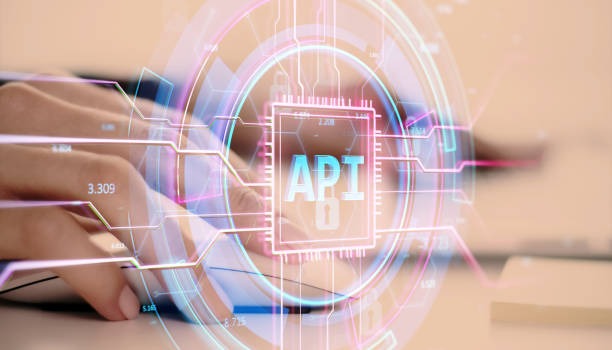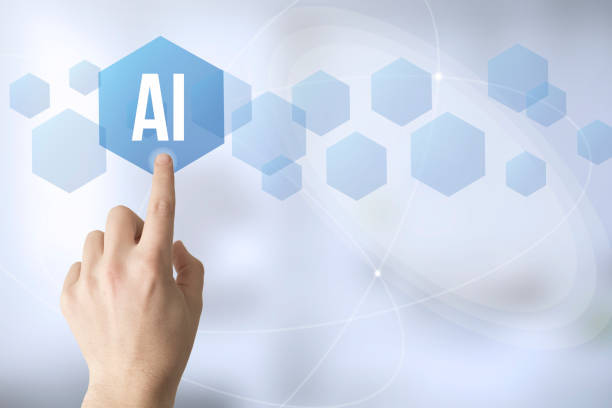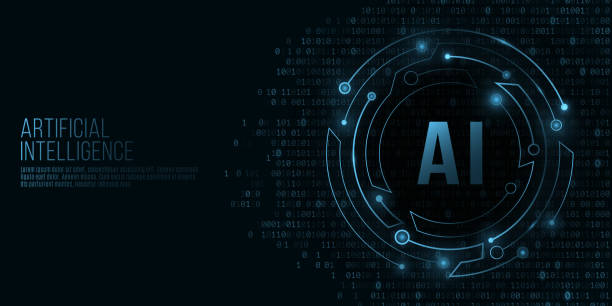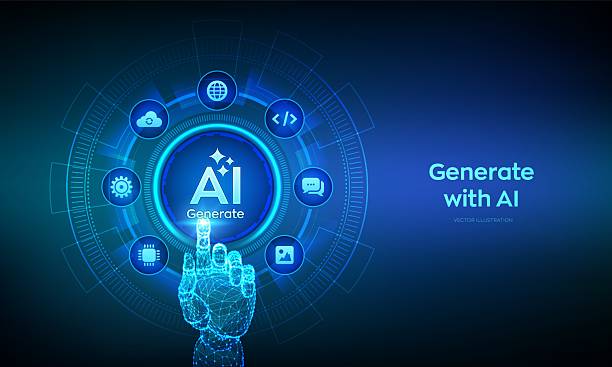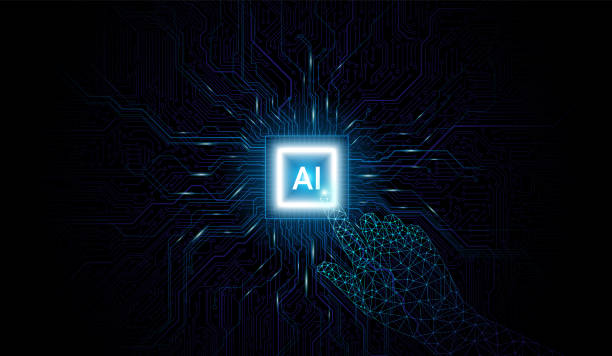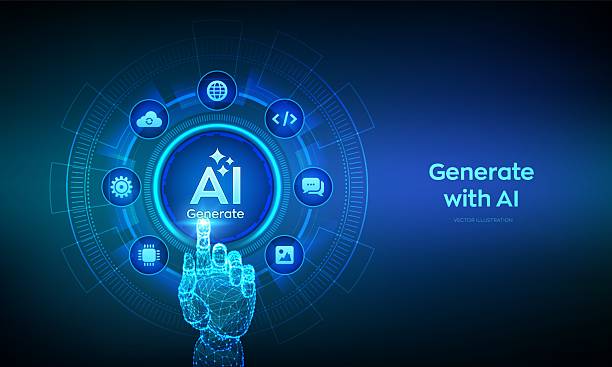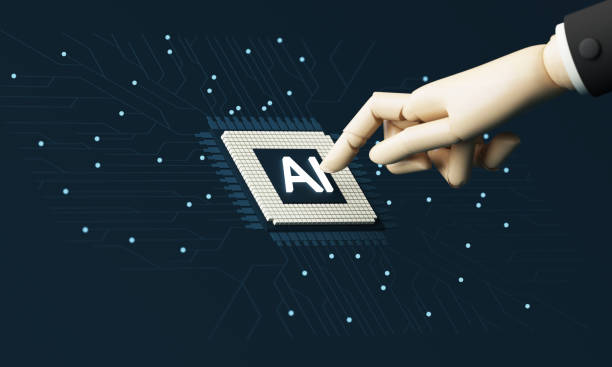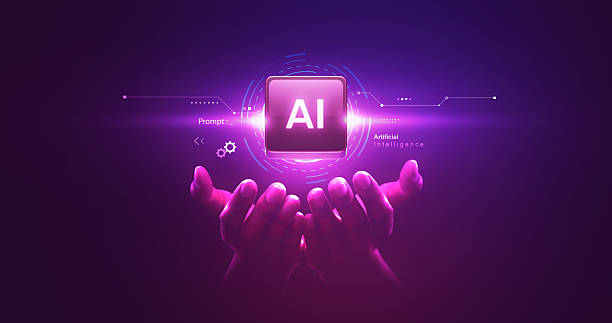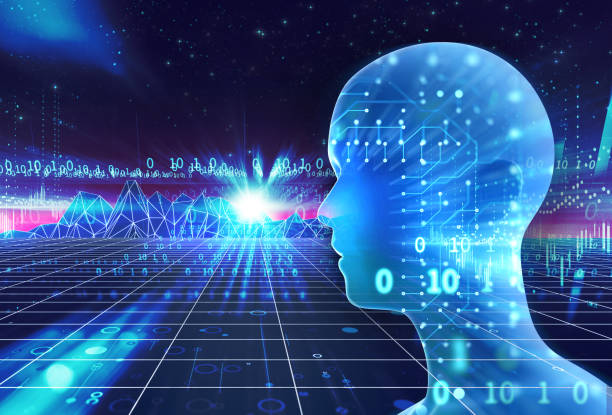What is Artificial Intelligence? Definitions and Fundamental Concepts
Artificial Intelligence (AI) is a branch of computer science dedicated to building machines capable of performing tasks that typically require human intelligence.
This broad definition encompasses a wide range of approaches, techniques, and applications.
In fact, the goal of #Artificial_Intelligence is to create systems that can learn, reason, solve problems, understand, and even be creative.
Simply put, artificial intelligence is an effort to simulate human intelligence in machines.
This simulation can include mimicking cognitive processes such as learning, reasoning, and problem-solving.
But artificial intelligence is not merely a simulation; it is an attempt to build systems that can perform these processes independently and without direct human intervention.
Various definitions of artificial intelligence have been offered, each focusing on a specific aspect of the field.
Some definitions define artificial intelligence as the ability of a machine to perform tasks that are currently better performed by humans.
Others define artificial intelligence as the study and design of intelligent agents.
An intelligent agent is a system that understands its environment and takes actions that maximize its chances of success in achieving its goals.
Fundamental concepts of artificial intelligence include machine learning, neural networks, natural language processing, computer vision, and robotics.
Machine learning allows machines to learn from data and improve their performance without explicit programming.
Neural networks are models inspired by the structure of the human brain and are used to learn complex patterns and relationships in data.
Natural language processing allows machines to understand and generate human language.
Computer vision allows machines to understand and interpret images and videos.
Robotics deals with the design and construction of robots that can operate in physical environments.
Are you tired of losing business opportunities due to not having a professional corporate website? Worry no more! With Rasaweb’s corporate website design services:
✅ Your brand’s credibility and professionalism increase.
✅ You attract more customers and sales leads.
⚡ Get a free consultation to get started now!
History of Artificial Intelligence from Idea to Reality
The history of Artificial Intelligence dates back to the 1950s when scientists and researchers first considered the idea that machines could be built capable of thinking and learning.
One of the early milestones in this field was the Dartmouth Conference in 1956, which is considered the official birth of artificial intelligence.
At this conference, leading researchers in the field of computer science gathered to discuss the possibility of building intelligent machines.
Click here to preview your posts with PRO themes ››
In the 1960s and 1970s, artificial intelligence witnessed significant advancements.
Computer programs were created that could solve mathematical problems, play chess, and even understand natural language.
However, these advances were also accompanied by limitations.
Machines were still unable to perform tasks that seemed simple to humans, such as facial recognition or understanding the concept of “meaning.”
In the 1980s, artificial intelligence entered a period known as the “AI winter.”
During this period, investment in the field decreased, and progress slowed.
This was due to the failure to meet initial expectations, as well as hardware and software limitations.
However, research in artificial intelligence did not stop, and researchers continued to develop new techniques such as neural networks and machine learning.
In the 1990s and 2000s, with advances in hardware and software, artificial intelligence flourished again.
The emergence of the Internet and the increase in the volume of data made it possible to train more complex machine learning models.
Deep Learning emerged as a powerful technique in artificial intelligence and was able to achieve remarkable results in areas such as computer vision and natural language processing.
Today, artificial intelligence is present in many aspects of our lives, from online recommendation systems to self-driving cars.
Applications of Artificial Intelligence in Today’s World
The applications of #Artificial_Intelligence in today’s world are vast and diverse.
From medicine and healthcare to transportation and manufacturing, artificial intelligence is transforming various industries.
Here are some of the most important applications of artificial intelligence:
Medicine and Healthcare Artificial intelligence is used in diagnosing diseases, developing drugs, caring for patients, and managing hospitals.
Intelligent systems can analyze medical images more accurately, identify disease patterns, and provide personalized treatments.
Transportation Self-driving cars, intelligent traffic management systems, and delivery drones are examples of the application of artificial intelligence in transportation.
These systems can increase the safety and efficiency of transportation and reduce costs.
Click here to preview your posts with PRO themes ››
Manufacturing Artificial intelligence is used in automating production lines, quality control, predicting equipment failure, and managing the supply chain.
These systems can increase productivity, reduce costs, and improve product quality.
Finance Artificial intelligence is used in fraud detection, risk management, providing personalized financial services, and market analysis.
These systems can improve financial decision-making and increase profitability.
Education Intelligent educational systems can personalize educational content, provide instant feedback, and evaluate student performance.
These systems can make learning more engaging and effective.
Customer Service Chatbots and virtual assistants can answer customer questions, solve their problems, and provide support services.
These systems can reduce customer service costs and increase customer satisfaction.
These are just a few examples of the applications of artificial intelligence in today’s world.
With the advancement of technology, the applications of artificial intelligence are expected to become more widespread and complex in the future.
| Area | Application of Artificial Intelligence |
|---|---|
| Medicine | Disease Diagnosis |
| Transportation | Self-Driving Cars |
| Finance | Fraud Detection |
Machine Learning: The Beating Heart of Artificial Intelligence
Machine Learning (ML) is a major subfield of artificial intelligence that enables machines to learn from data and improve their performance without explicit programming.
In other words, instead of giving machines explicit instructions to perform a task, machine learning allows them to discover patterns and relationships by analyzing data and make decisions based on them.
This process is similar to how humans learn, where we use our experiences and observations to improve our performance.
There are different types of machine learning algorithms, each suitable for a specific type of problem.
Some of the most important types of machine learning algorithms include:
- Supervised Learning In this type of learning, the algorithm is trained using labeled data.
Labeled data includes inputs and expected outputs.
The goal of the algorithm is to learn a function that can accurately predict the expected outputs for new inputs. - Unsupervised Learning In this type of learning, the algorithm is trained using unlabeled data.
The goal of the algorithm is to discover patterns and hidden structures in the data.
Clustering and dimensionality reduction are common techniques in unsupervised learning. - Reinforcement Learning In this type of learning, an agent operates in an environment and learns how to adjust its actions to receive the most rewards by receiving rewards or penalties.
This type of learning is suitable for solving problems such as video games and controlling robots.
Machine learning plays a key role in many applications of artificial intelligence.
For example, in facial recognition systems, machine learning algorithms learn how to recognize different faces using labeled images.
In online recommendation systems, machine learning algorithms analyze users’ purchase and search history to suggest products that they are likely to be interested in.
Are you bothered by losing customers who visit your site to shop?
Rasaweb is your specialized solution for having a successful online store.
✅ Significant increase in your online sales
✅ Creating trust and professional branding with customers⚡ Get a free consultation from Rasaweb experts!
Neural Networks: Inspired by the Human Brain
Neural Networks (NN) are computational models inspired by the structure and function of the human brain.
These networks consist of a large number of nodes (or neurons) that are connected in layers.
Each node is a simple processing unit that receives inputs, applies a function to them, and produces an output.
The connections between the nodes have weights that indicate the strength of the connection.
By adjusting the weights, the neural network can learn how to map inputs to desired outputs.
Neural networks were initially developed as a simple model to simulate the functioning of the human brain.
However, with advances in technology, neural networks have become a powerful tool for solving complex problems in various fields.
Deep Neural Networks (DNN), which consist of a large number of layers, have been able to achieve remarkable results in fields such as computer vision, natural language processing, and speech recognition.
One of the important features of neural networks is their ability to learn complex patterns and relationships in data.
Neural networks can learn from unlabeled data and discover hidden patterns in the data.
This feature makes them very useful for solving problems where little labeled data is available.
Neural networks are used in many applications of artificial intelligence.
For example, in facial recognition systems, deep neural networks learn how to recognize different faces with high accuracy using millions of images.
In machine translation systems, neural networks learn how to translate languages into each other using a large volume of translated texts.
In fraud detection systems, neural networks try to identify suspicious transactions by analyzing patterns of financial transactions.
For more information about neural networks and their applications, you can visit Wikipedia.
Natural Language Processing: Human-Machine Interaction
Natural Language Processing (NLP) is a branch of artificial intelligence that enables machines to understand, interpret, and generate human language.
The main goal of natural language processing is to create systems that can communicate with humans in natural language and perform tasks such as machine translation, text summarization, answering questions, and generating text.
Natural language processing includes a set of techniques and algorithms that are used to analyze and process human language.
Some of the most important techniques of natural language processing include:
- Syntactic Analysis This technique analyzes the grammatical structure of sentences and determines the relationships between words.
- Semantic Analysis This technique understands the meaning of sentences and determines the relationships between concepts.
- Discourse Analysis This technique understands the relationship between sentences in a text and analyzes the overall structure of the text.
Natural language processing plays a key role in many applications of artificial intelligence.
For example, in chatbots, natural language processing systems provide appropriate answers by understanding users’ questions.
In machine translation systems, natural language processing systems produce the equivalent text in the target language by analyzing the source text.
In information retrieval systems, natural language processing systems find relevant documents by understanding users’ questions.
In general, #Artificial_Intelligence is a very important topic.
With recent advances in the field of deep learning, natural language processing has witnessed significant progress.
Large Language Models (LLM) such as GPT-3 and BERT have been able to achieve very good results in various fields of natural language processing.
These models learn how to understand and generate human language with high accuracy by using a large volume of textual data.
Computer Vision: Intelligent Eyes for Computers
Computer Vision (CV) is a branch of artificial intelligence that enables machines to understand and interpret images and videos.
The main goal of computer vision is to create systems that can see like humans and extract useful information from images and videos.
Computer vision includes a set of techniques and algorithms that are used to process and analyze images and videos.
Some of the most important techniques of computer vision include:
- Object Detection This technique identifies and locates different objects in images and videos.
- Face Recognition This technique identifies and recognizes different faces in images and videos.
- Image Segmentation This technique segments images into different regions based on visual features.
- 3D Reconstruction This technique reconstructs 3D models of objects and scenes from images.
Computer vision plays a key role in many applications of artificial intelligence.
For example, in self-driving cars, computer vision systems help to drive safely by detecting traffic signs, other vehicles, and pedestrians.
In video surveillance systems, computer vision systems help to maintain security by detecting suspicious behavior.
In medical diagnosis systems, computer vision systems help to diagnose diseases by analyzing medical images.
In this section, we have provided you with a table that provides more information.
| Technique | Description |
|---|---|
| Object Detection | Identifying and locating objects in images |
| Face Recognition | Identifying and recognizing faces |
| Image Segmentation | Segmenting images into different regions |
Robotics: Integrating Artificial Intelligence and the Physical World
Robotics is a branch of engineering that deals with the design, construction, operation, and application of robots.
Robots are autonomous machines that can perform tasks that are usually performed by humans.
Robots can be used in dangerous, repetitive, or high-precision environments.
Artificial intelligence plays an important role in robotics.
Using artificial intelligence techniques, robots can understand their environment, make decisions, and perform their actions automatically.
Intelligent robots can be used in various fields such as manufacturing, health, transportation, and services.
Some applications of intelligent robotics include:
- Industrial Robots These robots are used on production lines to perform tasks such as welding, painting, and packaging.
- Medical Robots These robots are used in minimally invasive surgeries, rehabilitation, and drug delivery.
- Service Robots These robots are used in hotels, restaurants, and hospitals to perform tasks such as delivering food, cleaning, and transportation.
- Space Robots These robots are used to explore planets and moons and perform repairs in space.
With recent advances in artificial intelligence, robots are becoming more intelligent and capable machines.
Intelligent robots can cooperate with humans, learn from their experiences, and operate in complex environments.
In the future, robots are expected to play a more important role in our lives.
Are you tired of your company’s website not meeting your expectations? Design a professional website with Rasaweb that showcases the real face of your business.
✅ Increase attracting new customers and sales leads
✅ Increase your brand’s credibility and trust with audiences
⚡ Get a free website design consultation!
Challenges and Future of Artificial Intelligence
Artificial intelligence, despite its high potential, also faces challenges.
One of the most important challenges is the ethical concerns related to the use of artificial intelligence.
For example, the use of artificial intelligence in decision-making systems can lead to discrimination and inequality.
Also, the use of artificial intelligence in automatic weapons can create serious risks to global security.
Another challenge is the need for a lot of data to train artificial intelligence models.
Artificial intelligence models need a large volume of data to learn and improve their performance.
Collecting and labeling this data can be time-consuming and costly.
In addition, the data may contain biases that can lead to incorrect performance of artificial intelligence models.
Another challenge is the interpretability of artificial intelligence models.
Many artificial intelligence models, especially deep neural networks, are known as “black boxes.”
This means that it is difficult to understand how these models reached a specific decision.
This issue can be problematic in applications that require transparency and accountability.
Despite these challenges, the future of artificial intelligence looks very bright.
With continuous advances in the field of machine learning, neural networks, and natural language processing, artificial intelligence is becoming a powerful technology that can transform many aspects of our lives.
In the future, artificial intelligence is expected to play a more important role in areas such as medicine, transportation, education, and manufacturing.
To review New articles You can stay up to date with the topic of artificial intelligence
How to Learn Artificial Intelligence
Learning Artificial intelligence can be an exciting and challenging journey.
Given the breadth of this field, choosing a suitable and targeted learning path is very important.
Here are a few key points to get started learning artificial intelligence:
- Prerequisites Before you start learning artificial intelligence, it is essential to have basic knowledge in areas such as mathematics (linear algebra, differential and integral calculus, statistics and probability), computer science (data structures, algorithms, programming), and probably Python.
If you have weaknesses in these areas, it is better to strengthen them before you start learning artificial intelligence. - Choosing a Programming Language Python is known as the main programming language in artificial intelligence.
Python has powerful libraries and frameworks such as NumPy, Pandas, Scikit-learn, and TensorFlow that make learning and using artificial intelligence algorithms easy. - Choosing a Training Course There are many online and in-person training courses in the field of artificial intelligence.
You can choose a suitable training course according to your level of knowledge and interest.
Some reputable online learning platforms include Coursera, edX, Udacity, and Khan Academy. - Practice and Practical Projects Learning artificial intelligence is not possible without practice and practical projects.
After learning the basic concepts, try to apply your knowledge by doing small projects.
You can use ready-made projects or define new projects. - Participating in Online Communities There are many online communities in the field of artificial intelligence where you can ask your questions, exchange ideas with other enthusiasts, and use their experiences.
Some of these communities include Stack Overflow, Reddit, and LinkedIn.
Learning artificial intelligence is a continuous process.
With the advancement of technology, new algorithms and techniques are introduced in artificial intelligence.
Therefore, it is important to stay up-to-date and continue learning.
Artificial intelligence has led to many advances
Frequently Asked Questions
| Question | Answer |
|---|---|
| What is artificial intelligence? | It is a simulation of human intelligence in programmed machines to think like humans and mimic their actions. |
| What are the main branches of artificial intelligence? | Includes machine learning, deep learning, natural language processing, computer vision, and robotics. |
| What is Machine Learning? | It is a branch of artificial intelligence that focuses on enabling systems to learn from data and identify patterns without explicit programming. |
| Mention examples of artificial intelligence applications in our daily lives. | Voice assistants (such as Siri and Alexa), recommendation systems in Netflix and Amazon, self-driving cars, and face recognition software. |
| What is Deep Learning? | It is a subset of machine learning that uses multi-layered (deep) artificial neural networks to process large amounts of data. |
| What is Natural Language Processing (NLP)? | It is a branch of artificial intelligence that focuses on enabling computers to understand, interpret, and generate human language. |
| What are some of the ethical concerns related to artificial intelligence? | Includes bias in data, privacy, job loss, and liability in case of errors. |
| What are the main benefits of artificial intelligence? | Increasing efficiency, improving decision-making, automating repetitive tasks, and discovering complex patterns in data. |
| How is artificial intelligence used in the field of healthcare? | In diagnosing diseases, discovering drugs, analyzing medical images, and personal care for patients. |
| How do you see the future of artificial intelligence? | It is expected to continue to evolve at a rapid pace, affecting all aspects of human life, from industry to education and entertainment. |
And other services of Rasa Web Advertising Agency in the field of advertising
Smart brand identity: Transform click-through rates with the help of smart data analysis.
Smart digital branding: A combination of creativity and technology to increase sales through SEO-driven content strategy.
Smart SEO: A fast and efficient solution to increase site visits with a focus on attractive user interface design.
Smart Content Strategy: A novel service to increase SEO ranking improvement through marketing automation.
Smart Custom Software: An innovative platform to improve customer acquisition with Google Ads management.
And more than hundreds of other services in the field of internet advertising, advertising consulting, and organizational solutions
Internet Advertising | Advertising Strategy | Reportage Advertising
Sources
What is Artificial Intelligence?
,Artificial Intelligence: Everything you need to know
,Artificial intelligence from IBM’s point of view
,What is Artificial Intelligence? | Oracle
? To achieve your digital marketing goals and have a unique Custom Website Design, Rasa Web is your best choice. Transform your business in the online world with us.
📍 Tehran, Mirdamad Street, next to Central Bank, South Kazerun Alley, Ramin Alley No. 6
“`


